Furniture Clearance in White Goods Recycle
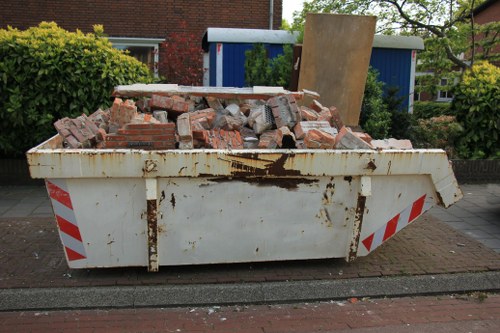
Understanding Furniture Clearance
Furniture clearance is an essential service for both individuals and businesses looking to efficiently remove outdated or unwanted furniture. Whether you're redecorating your home, upgrading your office space, or clearing out a storage area, furniture clearance provides a streamlined solution to manage bulky items without hassle.
One of the primary benefits of furniture clearance is the convenience it offers. Instead of spending hours arranging transportation or dealing with the logistics of disposal, professional clearance services handle everything for you. This not only saves time but also ensures that your furniture is disposed of responsibly.
Additionally, furniture clearance contributes to a clutter-free environment, promoting a more organized and aesthetically pleasing space. By removing unnecessary items, you create room for new furnishings that better suit your current needs and preferences.
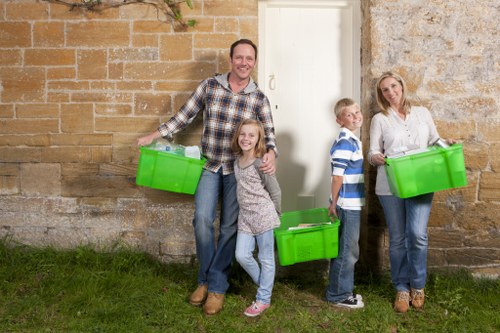
The Role of White Goods Recycle
White goods recycling plays a crucial role in sustainable furniture clearance. White goods typically refer to large household appliances like refrigerators, washing machines, and ovens. Proper recycling of these items ensures that harmful materials are safely disposed of, reducing environmental impact.
Recycling white goods involves breaking down appliances into their component parts, allowing for the recovery of valuable materials such as metal, plastic, and glass. This process not only conserves natural resources but also minimizes the amount of waste sent to landfills.
Moreover, responsible white goods recycling aligns with environmental regulations and promotes corporate social responsibility for businesses. By choosing services that prioritize recycling, you contribute to a greener planet and support sustainable practices within your community.
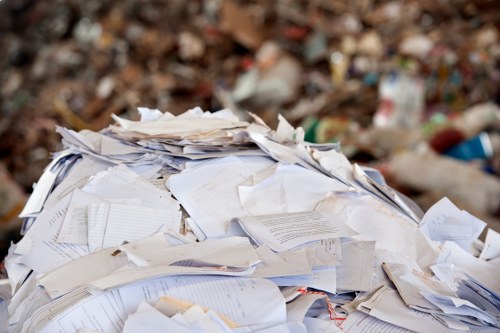
Benefits of Combining Furniture Clearance with White Goods Recycle
Integrating furniture clearance with white goods recycling offers numerous advantages, both environmentally and economically. By addressing the disposal of both furniture and white goods simultaneously, you streamline the clearance process, making it more efficient and cost-effective.
One significant benefit is the reduction of carbon footprint. Properly recycling white goods alongside furniture ensures that recyclable materials are repurposed, decreasing the need for new raw materials and lowering greenhouse gas emissions associated with manufacturing.
Furthermore, combining these services can lead to financial savings. Many clearance companies offer package deals that cover the removal and recycling of multiple types of items, providing better value compared to handling each separately.
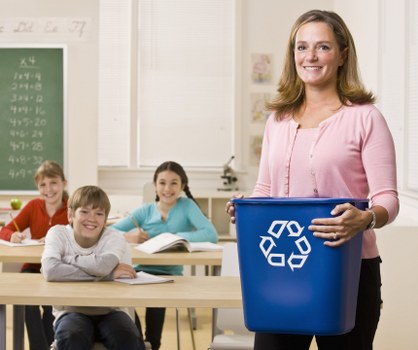
Steps Involved in Furniture Clearance and White Goods Recycle
Embarking on furniture clearance and white goods recycling typically involves several key steps to ensure a smooth and effective process:
- Assessment: An initial evaluation of the items to be cleared, determining which can be reused, recycled, or require disposal.
- Scheduling: Coordinating a suitable time for the clearance team to visit and commence the removal process.
- Removal: Professionally transporting the furniture and white goods from your premises to the recycling facility.
- Processing: Sorting and recycling materials at the facility, adhering to environmental standards.
- Finalization: Providing documentation of the recycling process and ensuring all items have been responsibly handled.
By following these steps, you can ensure that your furniture clearance and white goods recycling are conducted efficiently and sustainably.
Moreover, professional clearance services often provide additional support, such as advising on environmentally friendly disposal methods and offering insights into repurposing or donating items in good condition.
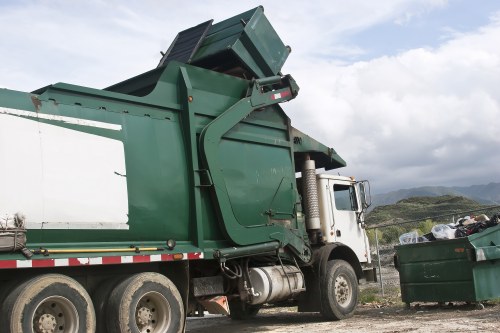
Choosing the Right Clearance and Recycling Service
Selecting a reputable clearance and recycling service is crucial to achieving optimal results. Consider the following factors when making your choice:
- Experience: Look for companies with a proven track record in furniture clearance and white goods recycling.
- Certifications: Ensure the service provider holds necessary environmental and safety certifications, indicating compliance with industry standards.
- Transparency: Choose services that offer clear information about their recycling processes and disposal methods.
- Customer Reviews: Read testimonials and reviews to gauge customer satisfaction and reliability.
- Cost: Compare pricing structures to find a service that fits your budget while maintaining quality.
By taking these factors into account, you can select a clearance and recycling service that meets your specific needs and ensures responsible handling of your furniture and white goods.
Additionally, don't hesitate to inquire about any additional services offered, such as temporary storage solutions or assistance with arranging new furniture, to further simplify the transition process.

Eco-Friendly Disposal Practices
Embracing eco-friendly disposal practices is integral to sustainable furniture clearance and white goods recycling. Such practices minimize environmental impact and promote the responsible management of resources.
Key aspects of eco-friendly disposal include:
- Recycling: Processing materials to be reused in manufacturing, thereby reducing waste and conserving natural resources.
- Donation: Donating items in good condition to charitable organizations, extending their lifecycle and benefiting those in need.
- Proper Disposal: Safely disposing of non-recyclable items in compliance with environmental regulations to prevent pollution.
Implementing these practices ensures that furniture and white goods are managed responsibly, supporting environmental sustainability and community well-being.
Furthermore, adopting eco-friendly disposal methods enhances your organization's reputation, demonstrating a commitment to environmental stewardship and social responsibility.

Cost-Effectiveness of Professional Services
Opting for professional furniture clearance and white goods recycling services can lead to significant cost savings in the long run. While there may be an upfront expense, the benefits often outweigh the costs.
Some cost-effective advantages include:
- Reduced Labor Costs: Professionals handle the heavy lifting, transportation, and logistics, eliminating the need for hiring additional help.
- Efficient Recycling: Proper recycling can recover valuable materials, potentially offsetting costs through resale or repurposing.
- Minimized Environmental Fees: Proper disposal avoids fines or fees associated with improper handling of hazardous or non-recyclable materials.
Additionally, many services offer bundled packages that provide comprehensive clearance and recycling solutions at competitive rates, enhancing overall affordability.
Choosing professional services ensures that the clearance process is handled effectively, reducing the likelihood of unexpected expenses and ensuring compliance with environmental standards.

Enhancing Space and Functionality
Clearing out old furniture and white goods paves the way for enhanced space and functionality within your home or office. A decluttered environment promotes better organization, increased productivity, and a more inviting atmosphere.
By removing bulky and outdated items, you free up valuable space that can be utilized more efficiently. This allows for the introduction of new furnishings that better align with your current needs and design preferences.
Moreover, an organized space facilitates easier movement and accessibility, reducing stress and improving overall well-being. In a workplace setting, a clean and functional environment can boost employee morale and performance.

Environmental Impact of Improper Disposal
Improper disposal of furniture and white goods poses significant environmental risks. Items that are not recycled or disposed of correctly can contribute to pollution, resource depletion, and harm to wildlife.
For instance, white goods often contain hazardous materials such as refrigerants and metals that, if released into the environment, can cause soil and water contamination. Similarly, furniture made from non-sustainable materials can lead to excessive waste accumulation in landfills.
By adhering to proper clearance and recycling practices, you help mitigate these environmental impacts. Responsible disposal ensures that harmful substances are managed safely and that recyclable materials are repurposed, supporting ecological balance and sustainability.

Future Trends in Furniture Clearance and Recycling
The landscape of furniture clearance and white goods recycling is continually evolving, driven by advancements in technology and increasing environmental awareness.
Emerging trends include:
- Smart Recycling Solutions: Integration of technology to optimize recycling processes, improve material sorting, and increase efficiency.
- Circular Economy Models: Emphasis on designing products for longevity, reuse, and recyclability, reducing waste and promoting sustainable consumption.
- Consumer Education: Increased efforts to educate the public about the importance of responsible disposal and the benefits of recycling.
Staying informed about these trends enables businesses and individuals to adopt more sustainable practices, fostering a positive environmental impact.
Moreover, embracing innovative recycling technologies can enhance operational efficiencies and support the transition towards a more sustainable and resilient economy.

Implementing Effective Clearance Strategies
Developing effective clearance strategies is essential for maximizing the benefits of furniture clearance and white goods recycling. Consider the following approaches:
- Planning Ahead: Schedule clearance activities during periods of low activity to minimize disruption and ensure timely removal.
- Segregating Items: Categorize items based on their condition and recyclability to streamline the clearance and recycling process.
- Collaborating with Experts: Partner with experienced clearance and recycling professionals to leverage their expertise and resources.
- Promoting Reuse: Identify opportunities to donate or sell items that are still in good condition, extending their lifecycle and benefiting others.
Implementing these strategies enhances the efficiency of the clearance process, reduces environmental impact, and supports cost-effective disposal solutions.
Additionally, clear communication and coordination with all stakeholders involved ensure that the clearance and recycling activities are conducted smoothly and effectively.

Regulatory Compliance and Standards
Ensuring regulatory compliance is vital in furniture clearance and white goods recycling. Adhering to local, state, and federal regulations helps avoid legal issues and promotes ethical disposal practices.
Key regulatory aspects include:
- Environmental Regulations: Compliance with laws governing the disposal of hazardous materials and the recycling of specific items.
- Data Protection: Proper handling of data-bearing items like smart appliances to ensure sensitive information is securely erased.
- Health and Safety Standards: Ensuring safe handling and transportation of bulky and heavy items to protect workers and property.
By following these standards, you contribute to a safer and more sustainable environment, while also enhancing your organization's credibility and trustworthiness.
Regularly reviewing and updating clearance and recycling practices in line with evolving regulations ensures ongoing compliance and continuous improvement in environmental performance.

Maximizing Efficiency in Furniture Clearance
Maximizing efficiency in furniture clearance involves optimizing processes to reduce time, cost, and resource consumption. Implement the following techniques to achieve a more efficient clearance workflow:
- Inventory Management: Maintain an accurate inventory of items to be cleared, facilitating better planning and resource allocation.
- Time Management: Schedule clearance activities during optimal times to enhance productivity and minimize disruptions.
- Resource Allocation: Assign appropriate resources, including manpower and equipment, to handle the clearance tasks effectively.
- Technology Integration: Utilize software and tools to track clearance progress, manage logistics, and streamline communication.
Enhancing efficiency not only accelerates the clearance process but also reduces operational costs and improves overall service quality.
Furthermore, continuous evaluation and refinement of clearance strategies help identify areas for improvement, fostering a culture of excellence and innovation within your clearance operations.

Community Benefits of Furniture and White Goods Recycling
Furniture and white goods recycling offer substantial benefits to the community, fostering economic growth, environmental sustainability, and social well-being.
Some of these benefits include:
- Job Creation: Recycling facilities and clearance services generate employment opportunities, contributing to the local economy.
- Resource Conservation: Recycling conserves natural resources by reusing materials, reducing the need for raw material extraction.
- Environmental Protection: Responsible disposal practices minimize pollution and protect ecosystems from harmful waste.
- Social Responsibility: Community recycling programs promote awareness and encourage sustainable practices among residents.
By participating in furniture clearance and white goods recycling, you support these community benefits, fostering a more resilient and sustainable local environment.
Additionally, community engagement initiatives, such as recycling drives and educational campaigns, further strengthen the collective commitment to environmental stewardship and sustainable living.

Innovative Solutions in Recycling Technology
Advancements in recycling technology are revolutionizing the furniture clearance and white goods recycling sectors. These innovations enhance the efficiency, accuracy, and sustainability of recycling processes.
Notable technological developments include:
- Automated Sorting Systems: Utilizing AI and robotics to accurately sort materials, increasing recycling rates and reducing manual labor.
- Advanced Material Recovery: Techniques that improve the extraction and purification of recyclable materials, enhancing their quality and marketability.
- Smart Tracking: Implementing IoT devices to monitor the movement and processing of items, ensuring transparency and accountability in recycling operations.
- Sustainable Design Innovations: Designing products with recyclability in mind, facilitating easier disassembly and material separation.
These technological breakthroughs enable more effective recycling practices, supporting environmental sustainability and operational efficiency.
Moreover, investing in innovative recycling technologies positions businesses at the forefront of sustainable practices, enhancing their competitive advantage and reputation in the market.

Conclusion and Next Steps
Furniture clearance paired with white goods recycling presents a comprehensive solution for managing unwanted items responsibly and sustainably. By leveraging professional services, embracing eco-friendly practices, and staying informed about emerging trends, you can ensure that your clearance activities contribute positively to both your personal or business environment and the broader community.
As the importance of environmental sustainability continues to grow, adopting effective clearance and recycling strategies becomes increasingly vital. Not only do these practices promote resource conservation and pollution reduction, but they also enhance operational efficiency and cost-effectiveness.
Ready to declutter and recycle responsibly? Contact us today to book your furniture clearance and white goods recycling service. Let us help you create a cleaner, greener, and more organized space.